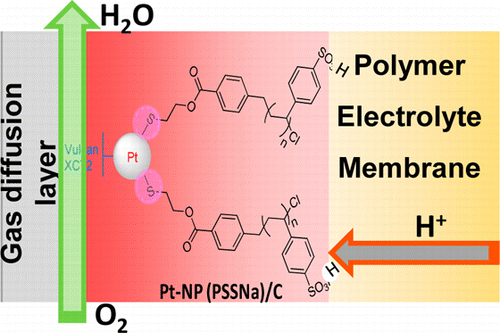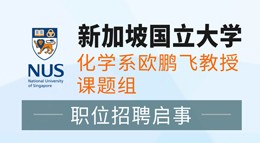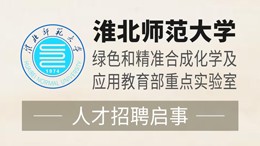当前位置:
X-MOL 学术
›
ACS Catal.
›
论文详情
Our official English website, www.x-mol.net, welcomes your feedback! (Note: you will need to create a separate account there.)
Fluorine-Free Pt Nanocomposites for Three-Phase Interfaces in Fuel Cell Electrodes
ACS Catalysis ( IF 11.3 ) Pub Date : 2016-09-20 00:00:00 , DOI: 10.1021/acscatal.6b02145 Delphine Dru 1, 2 , Stève Baranton 1 , Janick Bigarré 2 , Pierrick Buvat 2 , Christophe Coutanceau 1
ACS Catalysis ( IF 11.3 ) Pub Date : 2016-09-20 00:00:00 , DOI: 10.1021/acscatal.6b02145 Delphine Dru 1, 2 , Stève Baranton 1 , Janick Bigarré 2 , Pierrick Buvat 2 , Christophe Coutanceau 1
Affiliation

|
The first generation of proton exchange membrane fuel cells uses costly and unsafe perfluorinated sulfonic acid polymers (PFSAs) as membranes and as ionomers impregnating electrodes to achieve the three-phase boundaries. PFSAs imply paramount issues for large-scale manufacture, use, commercialization, and recycling. Alternative nonfluorinated polymers should allow obtaining not only membranes but also adequate ionomer suspensions in convenient solvents for preparing efficient catalytic layers, which has not yet been achieved. Here, we propose a universal solution consisting of the transposition of the three-phase boundary at the molecular level by grafting directly at the surface of carbon-supported Pt nanoparticles a nonfluorinated proton-conducting polymer combining the catalytic activity of the former and the transport properties of the latter. The length of the polystyrenesulfonate polymer chain (as a model polymer) and the number of polymer feet per platinum nanoparticles have been optimized in order to achieve the highest active surface area and activity possible. It was shown that low grafting density and high degree of polymerization gave the best configuration. The great potency of such nanocomposites as cathode catalysts for PEMFC was evidenced not only in a standard three-electrode cell but also under real working conditions in a single hydrogen/oxygen fuel cell, where higher activity and stability were obtained with a nanocomposite material in comparison to those with a classical Pt/C + Nafion electrode.
中文翻译:

燃料电池电极中三相界面的无氟Pt纳米复合材料
第一代质子交换膜燃料电池使用昂贵且不安全的全氟化磺酸聚合物(PFSA)作为膜,并作为浸渍电极的离聚物来实现三相边界。PFSA隐含着大规模生产,使用,商业化和回收利用的首要问题。替代性的非氟化聚合物不仅应能获得膜,而且还应能在方便的溶剂中获得足够的离聚物悬浮液,以制备有效的催化层,但这尚未实现。在这里,我们提出了一种通用解决方案,该方案包括通过在碳载Pt纳米颗粒的表面直接接枝非氟化质子传导聚合物,并结合前者的催化活性和传输性质,在分子水平上对三相边界进行转位。后者。聚苯乙烯磺酸盐聚合物链的长度(作为模型聚合物)和每个铂纳米粒子的聚合物英尺数已得到优化,以实现最大的活性表面积和活性。结果表明,低接枝密度和高聚合度可提供最佳构型。不仅在标准的三电极电池中,而且在单个氢气/氧气燃料电池中的实际工作条件下,都证明了这种纳米复合材料作为PEMFC的阴极催化剂的巨大效能,相比之下,使用纳米复合材料可获得更高的活性和稳定性。对于那些使用传统Pt / C + Nafion电极的用户。
更新日期:2016-09-20
中文翻译:

燃料电池电极中三相界面的无氟Pt纳米复合材料
第一代质子交换膜燃料电池使用昂贵且不安全的全氟化磺酸聚合物(PFSA)作为膜,并作为浸渍电极的离聚物来实现三相边界。PFSA隐含着大规模生产,使用,商业化和回收利用的首要问题。替代性的非氟化聚合物不仅应能获得膜,而且还应能在方便的溶剂中获得足够的离聚物悬浮液,以制备有效的催化层,但这尚未实现。在这里,我们提出了一种通用解决方案,该方案包括通过在碳载Pt纳米颗粒的表面直接接枝非氟化质子传导聚合物,并结合前者的催化活性和传输性质,在分子水平上对三相边界进行转位。后者。聚苯乙烯磺酸盐聚合物链的长度(作为模型聚合物)和每个铂纳米粒子的聚合物英尺数已得到优化,以实现最大的活性表面积和活性。结果表明,低接枝密度和高聚合度可提供最佳构型。不仅在标准的三电极电池中,而且在单个氢气/氧气燃料电池中的实际工作条件下,都证明了这种纳米复合材料作为PEMFC的阴极催化剂的巨大效能,相比之下,使用纳米复合材料可获得更高的活性和稳定性。对于那些使用传统Pt / C + Nafion电极的用户。






































 京公网安备 11010802027423号
京公网安备 11010802027423号